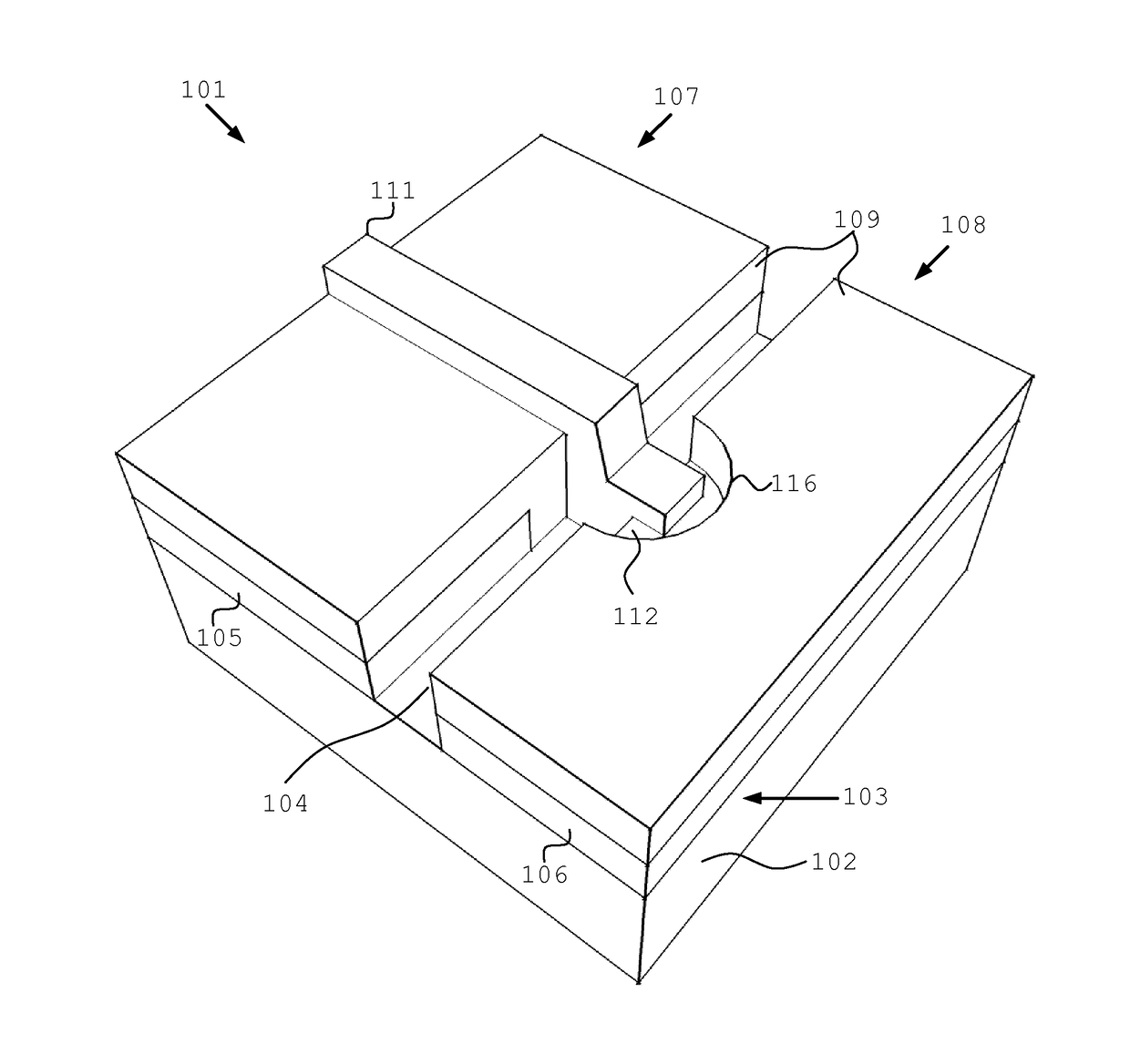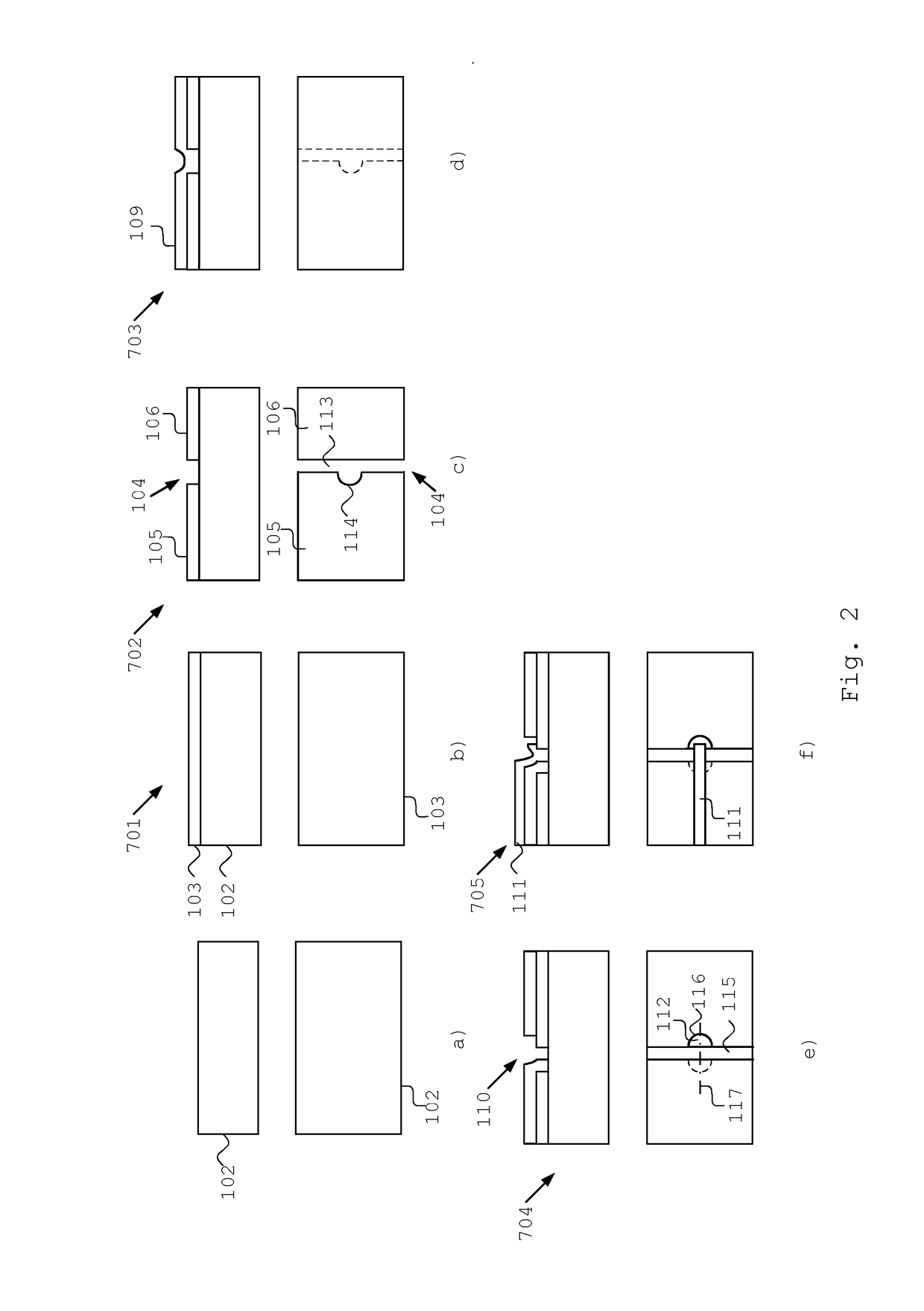Photovoltaic module and a method for producing the same
a photovoltaic module and photovoltaic technology, applied in the direction of sustainable manufacturing/processing, climate sustainability, semiconductor devices, etc., can solve the problems of layer needs, low output voltage per cell, transparent conductive oxide, etc., to reduce the resistance of the contact finger, the effect of reducing the length of the contact finger
- Summary
- Abstract
- Description
- Claims
- Application Information
AI Technical Summary
Benefits of technology
Problems solved by technology
Method used
Image
Examples
first embodiment
[0036]the present invention, a photovoltaic module, generally designated 101, is shown in FIG. 1. The photovoltaic module 101 comprises a substrate 102. The substrate 102 may be a sheet of glass or another suitable material that provides sufficient isolation and suitable surface properties.
[0037]A contact layer 103 is arranged on the substrate 102. The contact layer 103 may comprise a layer of molybdenum (Mo) that has been deposited on the substrate 102. A first gap 104 is provided in the contact layer 103. This first gap 104 forms and defines a first contact 105 and a second contact 106 in the contact layer 103. The first contact 105 is a bottom contact for a first photovoltaic cell 107, and the second contact 106 is a bottom contact for a second photovoltaic cell 108. The first gap 104 extends through the thickness of the contact layer 103 such that the first contact 105 and the second contact 106 are isolated from each other.
[0038]A photovoltaic stack 109 is provided on each of t...
third embodiment
[0062]The photovoltaic stack 109 of the third embodiment may comprise a photovoltaic structure according to the above description and as shown in FIG. 8.
[0063]In FIG. 6a)-f) a method for producing a photovoltaic module 101′ according to the third embodiment is disclosed. Features of the third embodiment that relate to features of the first embodiment by function have been given the same number indexing, but with a prime.
[0064]This method starts with a substrate 102, which may be a sheet of glass or a metal strip for example.
[0065]In FIG. 6b, on the substrate 102′ is a contact layer 103′ deposited by means of for example sputtering, evaporation or the like. The contact layer 103′ may be a layer of molybdenum (Mo).
[0066]FIG. 6c) discloses a process for forming the first gap 104′ by means of scribing, laser etching, milling or the like. The first gap 104′ defines a first contact 105 and a second contact 106 that are electrically isolated from each other. In this embodiment the first ga...
PUM
 Login to View More
Login to View More Abstract
Description
Claims
Application Information
 Login to View More
Login to View More - R&D
- Intellectual Property
- Life Sciences
- Materials
- Tech Scout
- Unparalleled Data Quality
- Higher Quality Content
- 60% Fewer Hallucinations
Browse by: Latest US Patents, China's latest patents, Technical Efficacy Thesaurus, Application Domain, Technology Topic, Popular Technical Reports.
© 2025 PatSnap. All rights reserved.Legal|Privacy policy|Modern Slavery Act Transparency Statement|Sitemap|About US| Contact US: help@patsnap.com



